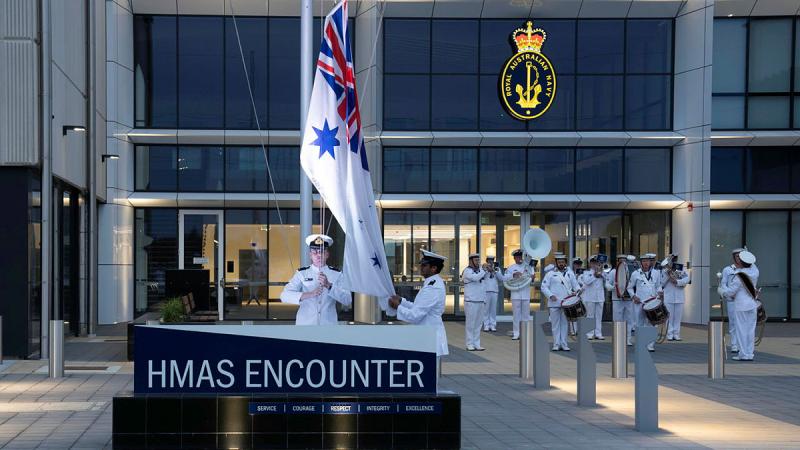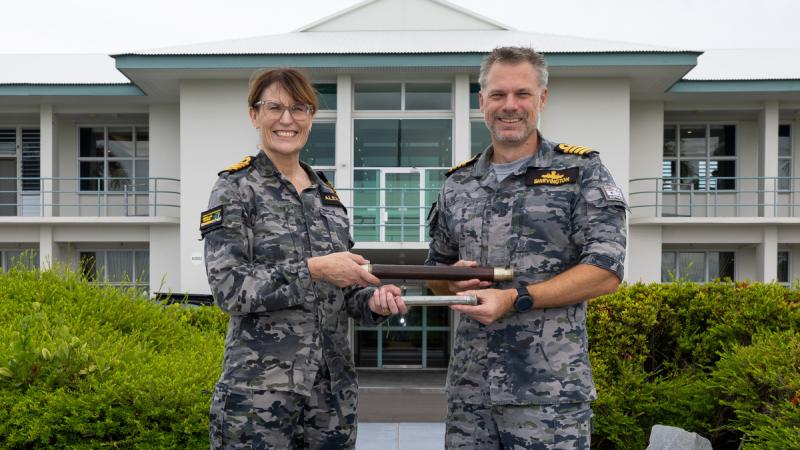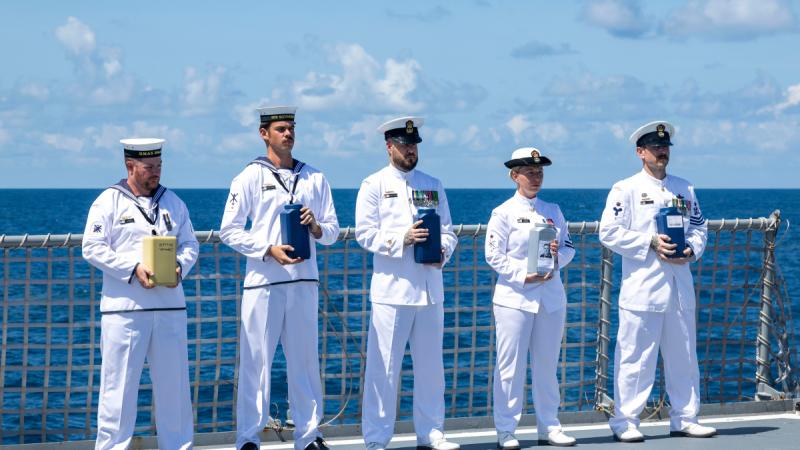11 July 2025
Leading Aircraftman Andrew Hunter has a unique Indigenous background that encompasses saltwater and desert tribal cultures.
The saltwater customs stem from his grandfather's people, the Iwaidja, while the desert customs from his grandmother's people, the Kaytetye. His grandparents met at the mission on Tiwi Island.
The Iwaidja people are from Arnhem Land with the crocodile as his grandfather’s totem. The crocodile symbolises protection on land and at sea.
During the bombing of Darwin in World War 2, Leading Aircraftman Hunter’s grand-uncle captured a downed Japanese pilot on the Tiwi Islands.
He transported the prisoner to Darwin, where the pilot was handed over to the Australian armed forces. A bronze statue erected on the Tiwi Islands commemorates this event.
After Cyclone Tracy devastated Darwin in December 1974, Leading Aircraftman Hunter’s family relocated to Alice Springs.
His grandfather remained in Darwin to help rebuild, but contracted pneumonia, which prevented him from rejoining the family.
The Kaytetye people are from a region 400 kilometres north of Alice Springs called Barrow Creek.
Near Barrow Creek is the site of Karlu Karlu, also known as ‘the Devil’s Marbles’.
The Kaytetye believe Karlu Karlu to be the fossilised eggs of the Rainbow Serpent, which is Leading Aircraftman Hunter’s grandmother’s totem.
The nurturing aspect of the Rainbow Serpent and her eggs balance with the protective qualities of the saltwater crocodile totem.
'Grandmother being from the desert, grandfather from the saltwater, we kind of have the best of both worlds.'
“So, grandmother being from the desert, grandfather from the saltwater, we kind of have the best of both worlds,” Leading Aircraftman Hunter said.
“All throughout the Northern Territory, I’ve got family. I grew up learning their stories.”
Today, Leading Aircraftman Hunter plays a vital role in supporting command in cultural guidance for the South-East Queensland region and Torres Strait islands, and also supporting Indigenous aviators who may struggle with being away from Country or family.
He offers mentorship, guidance and culturally informed counselling, engages with local elders and community councils to strengthen ties between the Australian Defence Force and Indigenous communities.
Leading Aircraftman Hunter runs cultural workshops ranging from art to an interactive culture weapons display and bush food (tucker) on RAAF Base Amberley.
He engages with participants in Indigenous youth programs, sharing knowledge of how the oldest living culture crafted boomerangs, and created the first maps and seasonal guides.
These were achieved through rock paintings and carvings and cultural storytelling passed across the Australian continent.
Across Australia there are many NAIDOC week events, during which Indigenous Liaison Officers with ADF Careers engage with the community to highlight potential career pathways for our young Indigenous people.


